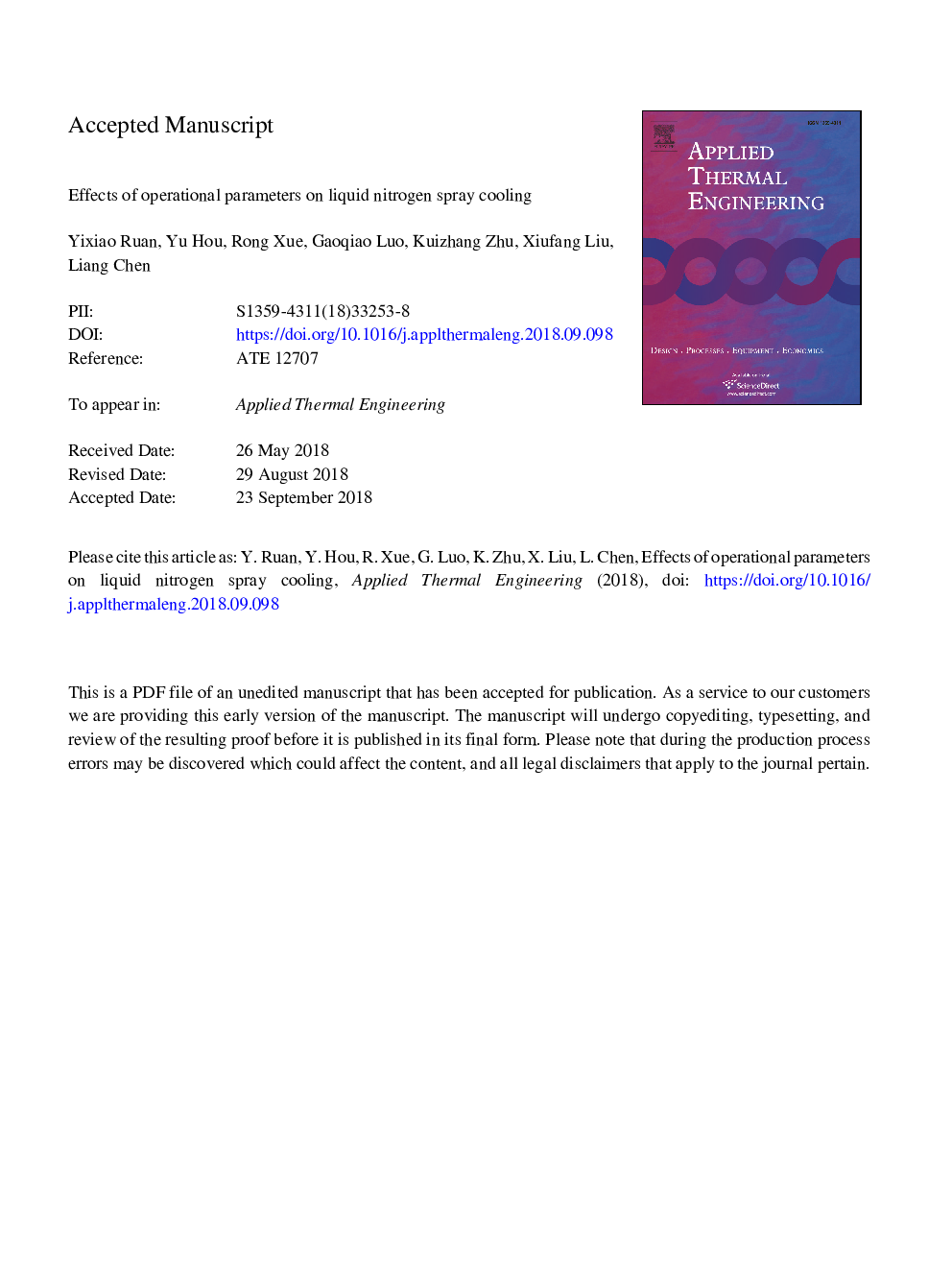| Article ID | Journal | Published Year | Pages | File Type |
|---|---|---|---|---|
| 11020803 | Applied Thermal Engineering | 2019 | 19 Pages |
Abstract
To determine the influence of design parameters on droplet evaporation and distribution of liquid nitrogen (LN2) spray cooling, experimental and numerical studies are performed by varying the mass flow rate, flow velocity, droplet diameter, injection orientation, and droplet velocity. The results demonstrate that backward injection yields the highest droplet evaporation ratio, which is 40% and 10% higher than the evaporation ratios obtained through forward and transverse injections, respectively. Counter-rotating vortex pairs are observed in the transverse injection, which improves the temperature distribution via convective mixing. Reducing the droplet diameter provides a more effective means of enhancing the evaporation than increasing the droplet velocity, and a linear increase in the droplet evaporation is observed by reducing the droplet diameter from 0.6 to 0.2â¯mm. The results and findings provide guidelines for the design of LN2 spray cooling systems for cryogenic wind tunnels.
Related Topics
Physical Sciences and Engineering
Chemical Engineering
Fluid Flow and Transfer Processes
Authors
Yixiao Ruan, Yu Hou, Rong Xue, Gaoqiao Luo, Kuizhang Zhu, Xiufang Liu, Liang Chen,
